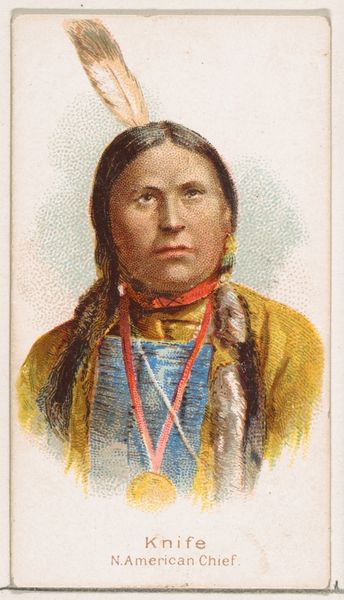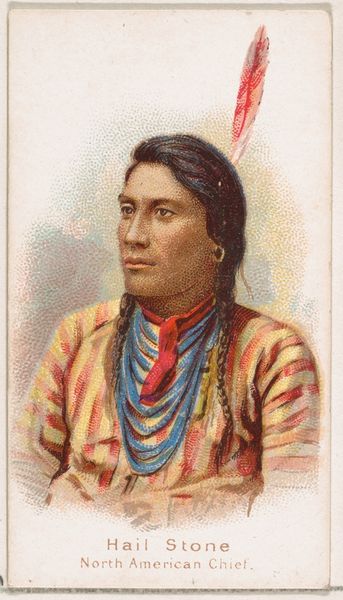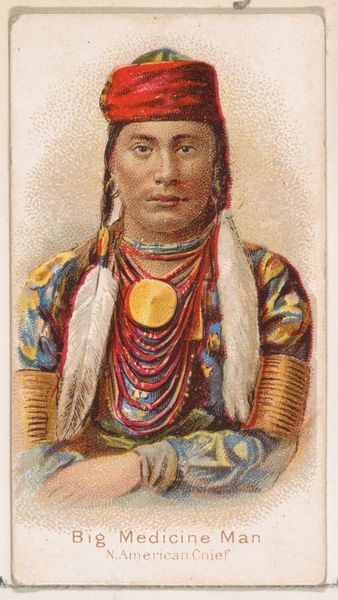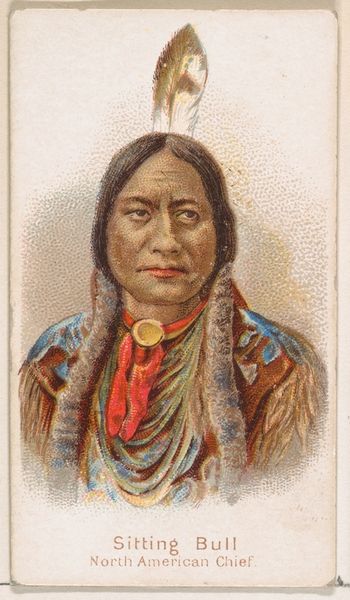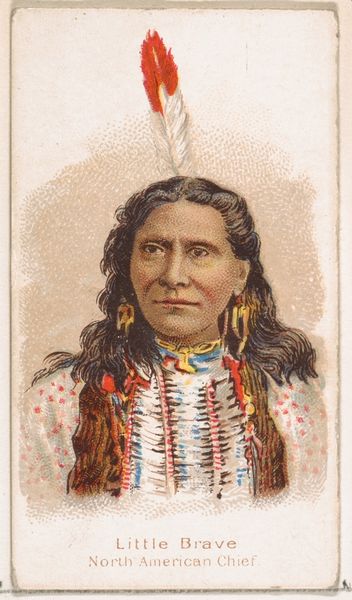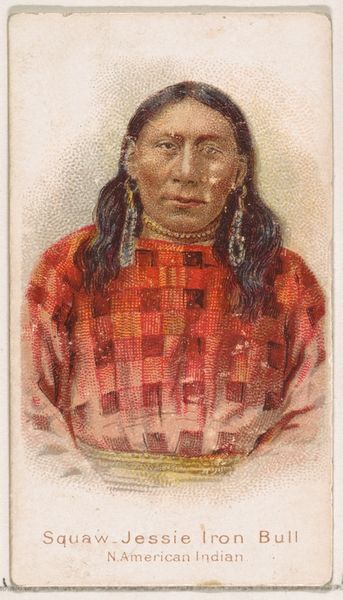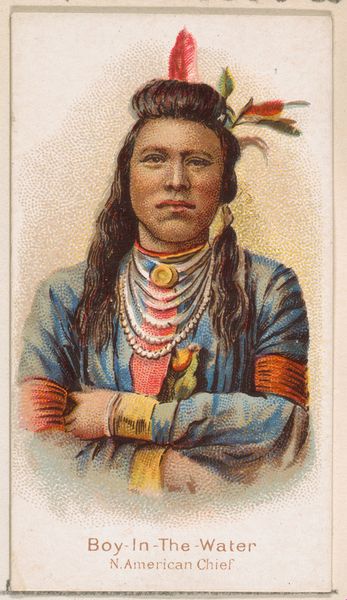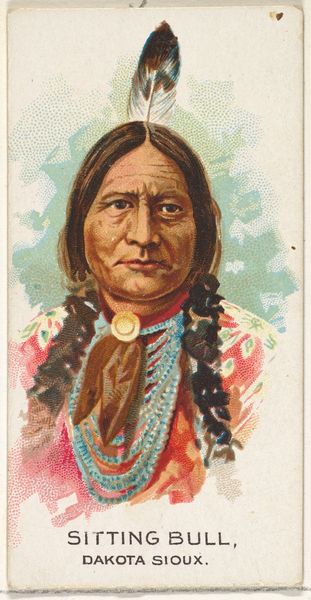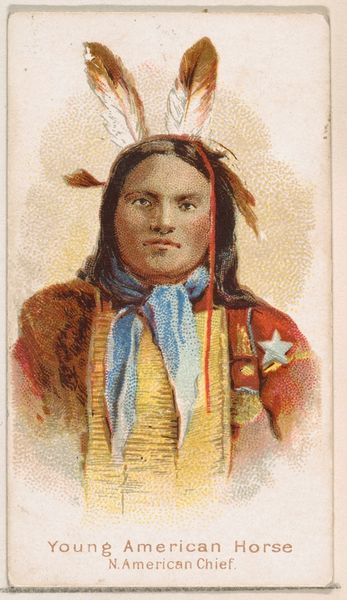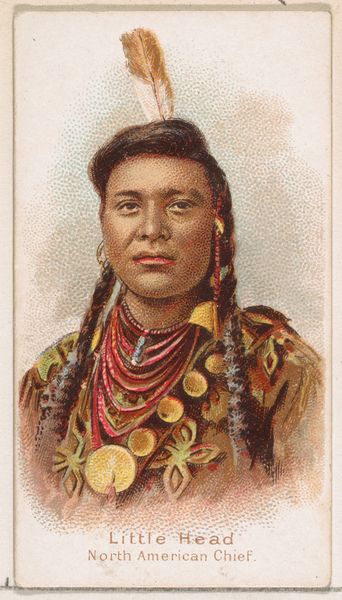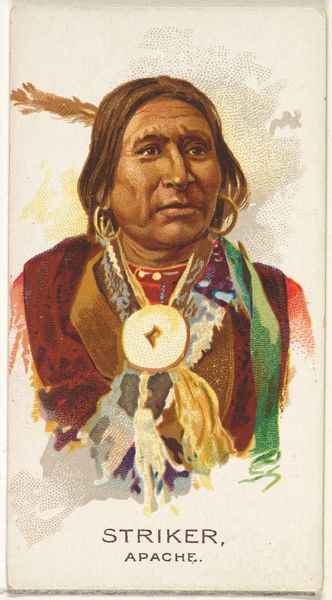
Eagle, North American Chief, from the Savage and Semi-Barbarous Chiefs and Rulers series (N189) issued by Wm. S. Kimball & Co. 1888
0:00
0:00
lithograph, print
#
portrait
#
lithograph
# print
#
caricature
#
figuration
#
coloured pencil
Dimensions: Sheet: 2 11/16 × 1 1/2 in. (6.8 × 3.8 cm)
Copyright: Public Domain
Curator: Here we have "Eagle, North American Chief" from the Savage and Semi-Barbarous Chiefs and Rulers series (N189) issued by Wm. S. Kimball & Co., dating back to 1888. It’s currently held at the Metropolitan Museum of Art. My immediate sense is one of forced caricature, even romanticism, which I find somewhat disturbing given the history. Editor: It does possess a romantic quality. The composition centers on a portrait, emphasizing the sitter’s face. There's also a formality suggested by the use of colour-pencil in this manner, reminiscent of popular prints of the era. The subtle color variations add depth to the image. Curator: I see it more as a product of its time—a late 19th-century commercial venture capitalizing on fascination with "the exotic other". Kimball, a tobacco company, used these cards as premiums. This artwork raises complex questions about commodification of Indigenous culture, particularly when viewed through a lens of labour and consumption, aspects central to its existence. Editor: But can we ignore the formal elements that speak beyond the commercial purpose? Look at how the artist employs the red feather, creating a striking visual contrast against the darker hair and patterned vest. It almost mimics classical portraiture’s emphasis on a focal point. Curator: Yes, but the contrast itself perpetuates stereotypes. The romanticizing portrayal arguably simplifies and misrepresents Indigenous identity, making it digestible for the mass market. What were the actual production processes? How were these images circulated? These aspects highlight the artwork’s ideological work and inherent power dynamics. Editor: Perhaps, but its power stems partly from the artistic choices made—the soft rendering of the skin, the intricate details in the vest design. Those elements, while perhaps appropriative, give it an undeniable visual appeal and enduring presence. There's undeniable presence in how they use coloured pencil, which suggests a technical skill worthy of consideration irrespective of cultural representation. Curator: An appeal cultivated for profit, masking potentially harmful biases in the materiality of image circulation. Editor: It gives us quite a lot to ponder regarding representation and how meaning shifts based on production processes versus intrinsic aesthetic values. Curator: Agreed. A potent reminder that images never exist in a vacuum, and material circumstances dramatically change reception and intent.
Comments
No comments
Be the first to comment and join the conversation on the ultimate creative platform.
